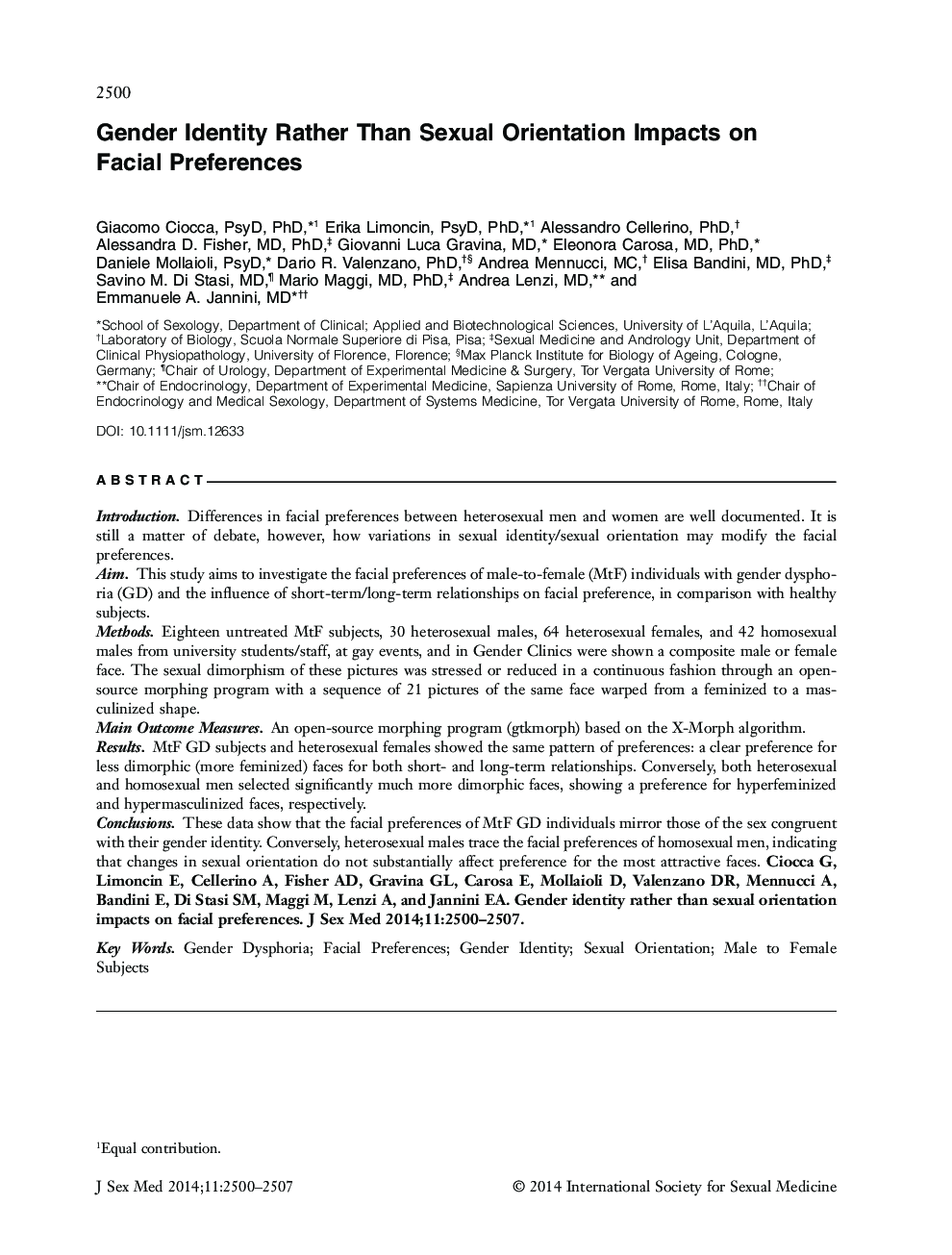| Article ID | Journal | Published Year | Pages | File Type |
|---|---|---|---|---|
| 4270003 | The Journal of Sexual Medicine | 2014 | 8 Pages |
IntroductionDifferences in facial preferences between heterosexual men and women are well documented. It is still a matter of debate, however, how variations in sexual identity/sexual orientation may modify the facial preferences.AimThis study aims to investigate the facial preferences of male‐to‐female (MtF) individuals with gender dysphoria (GD) and the influence of short‐term/long‐term relationships on facial preference, in comparison with healthy subjects.MethodsEighteen untreated MtF subjects, 30 heterosexual males, 64 heterosexual females, and 42 homosexual males from university students/staff, at gay events, and in Gender Clinics were shown a composite male or female face. The sexual dimorphism of these pictures was stressed or reduced in a continuous fashion through an open‐source morphing program with a sequence of 21 pictures of the same face warped from a feminized to a masculinized shape.Main Outcome MeasuresAn open‐source morphing program (gtkmorph) based on the X‐Morph algorithm.ResultsMtF GD subjects and heterosexual females showed the same pattern of preferences: a clear preference for less dimorphic (more feminized) faces for both short‐ and long‐term relationships. Conversely, both heterosexual and homosexual men selected significantly much more dimorphic faces, showing a preference for hyperfeminized and hypermasculinized faces, respectively.ConclusionsThese data show that the facial preferences of MtF GD individuals mirror those of the sex congruent with their gender identity. Conversely, heterosexual males trace the facial preferences of homosexual men, indicating that changes in sexual orientation do not substantially affect preference for the most attractive faces. Ciocca G, Limoncin E, Cellerino A, Fisher AD, Gravina GL, Carosa E, Mollaioli D, Valenzano DR, Mennucci A, Bandini E, Di Stasi SM, Maggi M, Lenzi A, and Jannini EA. Gender identity rather than sexual orientation impacts on facial preferences. J Sex Med 2014;11:2500–2507.
